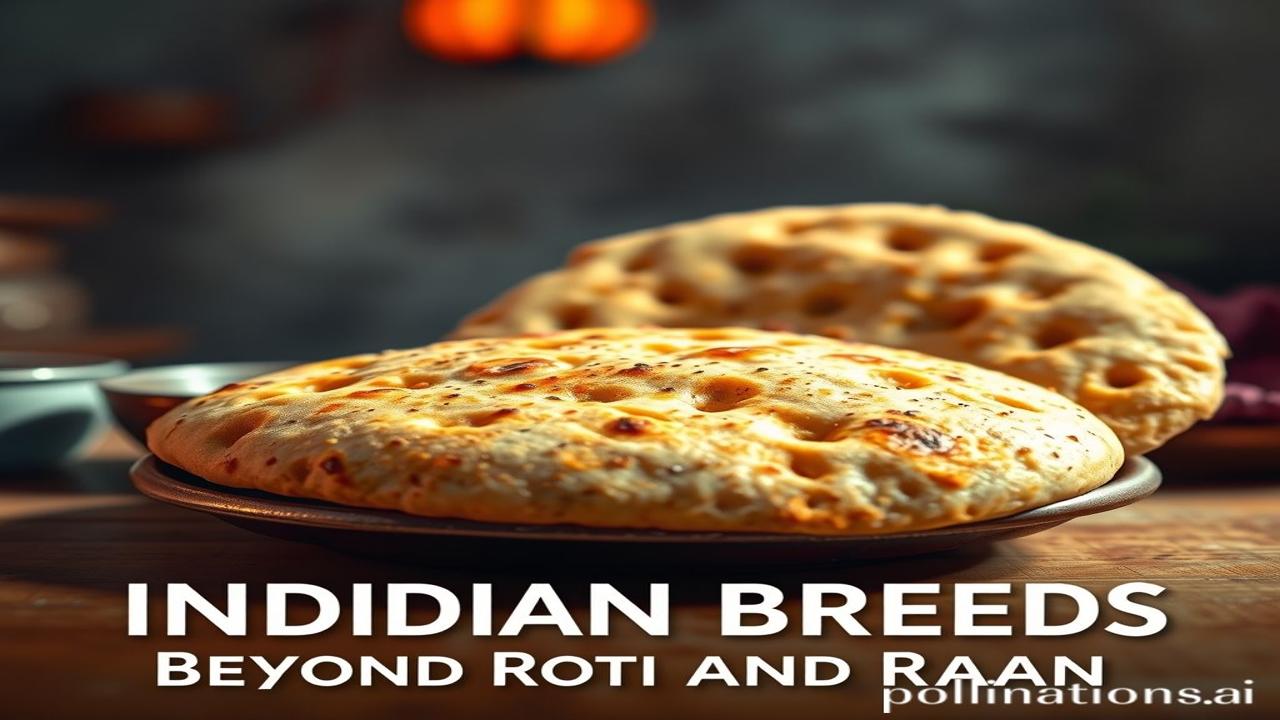Roti, Naan Toh Bas Shuruaat Hai: Unveiling India’s Hidden Bread Basket
Kabhi socha hai, dadi maa ke haathon se bani roti ke alawa, Bharat ki dharti ne kitne anokhe aur lazeez anaaj ugae hain? We all know roti and naan, the ubiquitous flatbreads that grace tables across the country. But that’s just the tip of the iceberg! India ka bread culture is a vibrant tapestry woven with regional specialties, ancient grains, and culinary secrets passed down through generations. Let’s embark on a delicious journey beyond the familiar and discover the hidden treasures of Indian breads!
The Breadcrumb Trail: A Glimpse into India’s Culinary History
What we know as “Indian bread” today has roots stretching back millennia. From the Indus Valley Civilization, where grains like wheat and barley were cultivated, to the Mughal era which introduced refined techniques, Indian bread making has evolved. Think about it – 5000 years of experimentation, innovation, and adaptation, all focused on perfecting the art of turning humble grains into edible works of art!
Wheat, of course, became a staple, especially in the north. Rice flour dominated the south. But there were countless other grains – millets like bajra and jowar, amaranth, even chestnut flour – each adding its unique flavor and texture to the regional bread landscape. This wasn’t just about sustenance; it was about identity. Every region, every community, expressed its unique relationship with the land through its bread.
Life Through the Oven’s Eyes: The Everyday Bread Makers
Imagine a Rajasthani village, the sun beating down on the arid landscape. A woman, her face etched with the wisdom of generations, kneads bajra flour with water and ghee. She’s making bajre ki roti, a staple for the hard-working farmers of the region. The roti is cooked over an open fire, imparting a smoky flavor that speaks of resilience and resourcefulness.
Or picture a Goan household, the air thick with the aroma of baking coconut and rice flour. Pão, a legacy of Portuguese influence, is being prepared. The baker, a local artisan, meticulously shapes the dough before slipping it into a wood-fired oven. The crackling fire, the rhythmic kneading, the laughter and chatter – these are the sounds and smells of everyday life, all centered around the simple act of making bread.
Ma Rukmini, a farmer’s wife in Maharashtra, often prepared bhakri (a flatbread made from jowar or bajra) for her family. Her hands, roughened by toil, moved with practiced ease, transforming coarse flour into soft, nourishing bread. For her, it wasn’t just food; it was a symbol of her love and care for her family.
Dhrohar and Pehchaan: The Living Legacy of Indian Breads
Today, even as pre-packaged breads and international cuisines dominate urban landscapes, these traditional breads continue to survive. They’re found in rural households, in niche restaurants, and during festivals. They are a dharohar, a heritage, that connects us to our roots.
Consider the thalipeeth of Maharashtra – a multi-grain pancake, packed with vegetables and spices, offering a nutritious and delicious meal. Or the akki roti of Karnataka, made with rice flour and herbs, showcasing the region’s culinary creativity. These breads are more than just food; they are a testament to the diversity and ingenuity of Indian cuisine. They are a vital part of our Bharatiyata, our Indianness, a living embodiment of our cultural heritage.
Interesting Fact ya Myth-Buster: The Truth About Gluten
Log samajhte hain ki sab Indian breads gluten-free hote hain. But asli sach yeh hai ki while many traditional Indian breads are indeed gluten-free (especially those made with millets like bajra and jowar), others, like naan and roti made with wheat flour, contain gluten. It’s all about the ingredients! Understanding the ingredients helps you make informed choices based on your dietary needs and preferences.
Visuals and Feelings: The Senses Come Alive
Imagine the coarse texture of freshly ground bajra flour between your fingers. The earthy aroma rising from the tawa as bhakri cooks. The satisfying crunch as you bite into a perfectly crispy thalipeeth. The warmth of a pão straight from the oven, its crust giving way to a soft, airy interior. These are the sensations that connect us to the soul of India, to the land and its people. The air smells of freshly baked dough, a mix of spices, and the smoky aroma of wood fires. Temple walls, cool to the touch, echo with the chanting of prayers, a symphony of sounds that fills the soul.
Antim Vichar ya Uddharan: Food for Thought
“Annam Brahma” – Food is Brahman, a divine force. This ancient saying encapsulates the profound significance of food in Indian culture. It reminds us that food is not just sustenance; it is a source of nourishment, connection, and spiritual fulfillment. As we savor the diverse tapestry of Indian breads, let us remember the hands that made them, the land that nurtured them, and the traditions that have preserved them for generations. So let us remember that food is a legacy and the stories it carries.
